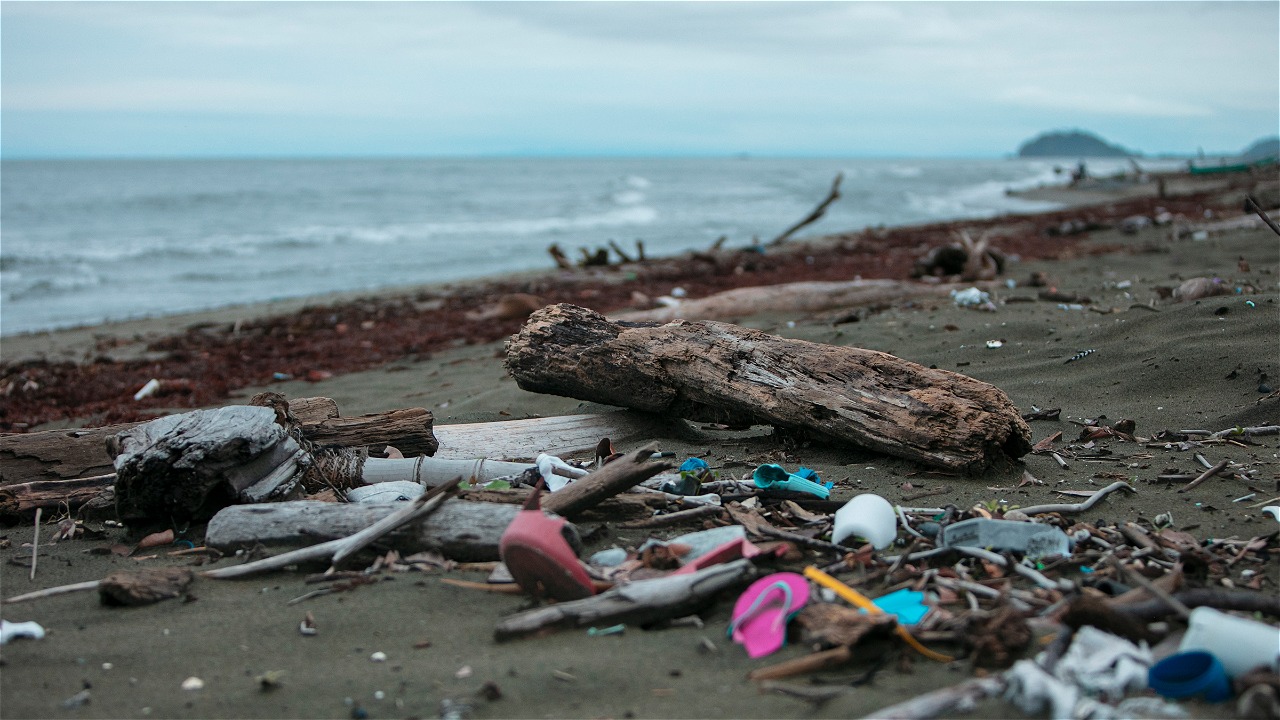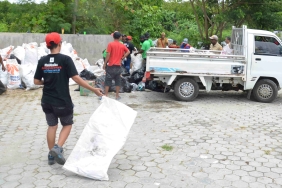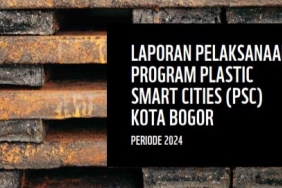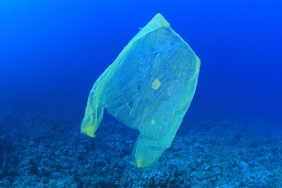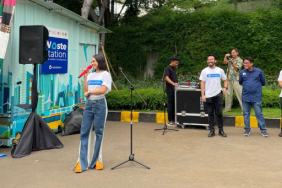WWF AND FKP UDAYANA UNIVERSITY TRAIN MARINE DEBRIS DATA COLLECTION ON THE COAST OF LABUAN BAJO, WAKATOBI, & MAKASSAR
By: Made Putri Karidewi (Plastic Free Ocean Program, WWF-Indonesia)
Read Previously: Building a Network of Citizen Science for Collaboration to Tackle Indonesia's Marine Debris
"Handling waste by recording it, is the key to better management in the future," Mr. Drs. Yance Usman, Head of the Environment and Hygiene Office of West Manggarai, opened the training of the Citizen Science Survey and Data Collection of Ocean Plastic Waste in Labuan Bajo (5-6/04/2018).
Labuan Bajo is the opening city in a series of trainings that WWF held with the Marine Debris Guard Udayana community and researchers from the Faculty of Marine and Fisheries (FKP) Udayana University, Bali. The other two areas that we also visited were Wakatobi and Makassar. This series of trainings is one of the efforts in preparing for the formation of a network of citizen science.
That afternoon, at Pede Beach, Labuan Bajo, 22 participants consisting of the Komodo National Park Office, government agencies, tourism actors, non-governmental organizations, community organizations, environmental practitioners, and the general public of Labuan Bajo practiced waste data collection.
"The method, developed by the Commonwealth Scientific and Industrial Research Organization (CSIRO) Global Plastic Pollution Project, Australia, uses a stratified random sampling design. Surveys using this method can find a much higher density of waste," explained Dr. I Gede Hendrawan, a researcher from the Faculty of Marine and Fisheries (FKP) of Udayana University.
"The CSIRO method aims to measure the leakage of plastic waste found on the coast using a transect system," he continued. Transect means a line or path to find out and observe the distribution or presence of garbage along an area.
"At each observation point, we record the amount and type of waste found. Transects are carried out by walking from the edge of the sea water towards land up to 2 meters behind the start of the nearshore vegetation and this is referred to as the transect length. This transect length is then divided into 10 to determine the interval," he explained again.
As for the width of the transect is 2 meters, 1 meter on the left side and 1 meter on the right side. This method can provide an overview of the distribution of marine debris in a coastal area quickly, precisely, and at one survey location only requires 3 - 4 surveyors.
The main difference between this method and other methods is that this survey can include debris as small as 1 - 2 mm (0.1 - 0.2 cm) where other methods do not record debris smaller than 1 inch (25 mm). The litter survey was conducted in a minimum of 3 transects and a maximum of 6 transects with a distance of 50 meters from each transect.
There are 5 parts of the worksheet that need to be filled by the observer, namely Coastal Site Survey, Coastal Transect Data, Items List, Debris Size Chart, and Brand of Product. The data from the waste recording is then inputted into an excel file that is equipped with a formula to produce a pie chart containing the percentage composition of each category and type of waste.
Another data is waste concentration which contains information about the amount of waste per square meter. In addition, data on the product brand of the waste is also available. This one is the result of additions or modifications to the method considering the existence of this information is very important. The result is then a database system whose benefits can be used for various purposes.
From the observation on the transect conducted by the trainees, it was found that out of the total 382 waste, 16% were hard plastic, 47% soft plastic, 1.3% plastic straps. The rest were metal, glass, rubber, fabric, paper, and others. The average concentration of trash found was 3.12 trash/m2, which indicates Pede Beach is still relatively dirty.
Not only in Labuan Bajo, this training was welcomed in Wangi-wangi District, Wakatobi (28/06/2018) and Makassar (30/06/2018). In Wakatobi, 31 trainees found that similar to Labuan Bajo, the waste at Cemara Beach, Wa Pia Pia Village, was dominated by plastic, with 16% hard plastic, 35% soft plastic, and 2% plastic straps. The difference is that Cemara Beach is quite clean with an average waste concentration at each observation point of 0.66 waste/m2.
Makassar has the same story. A total of 42 participants consisting of government agencies, tourism actors, non-governmental organizations, print media, and the public found that Biru Beach, Makassar, was dominated by plastic - 7% hard plastic, 48% soft plastic, 4% plastic straps. With an average waste concentration of 1.29 waste/m2, Biru Beach is still quite clean.
This series of trainings is not over yet. Whoever you are, individuals or organizations who are willing to be involved in contributing to the survey and monitoring of marine plastic debris in Indonesia, can try to practice this method in a beach cleanup activity in your city.

